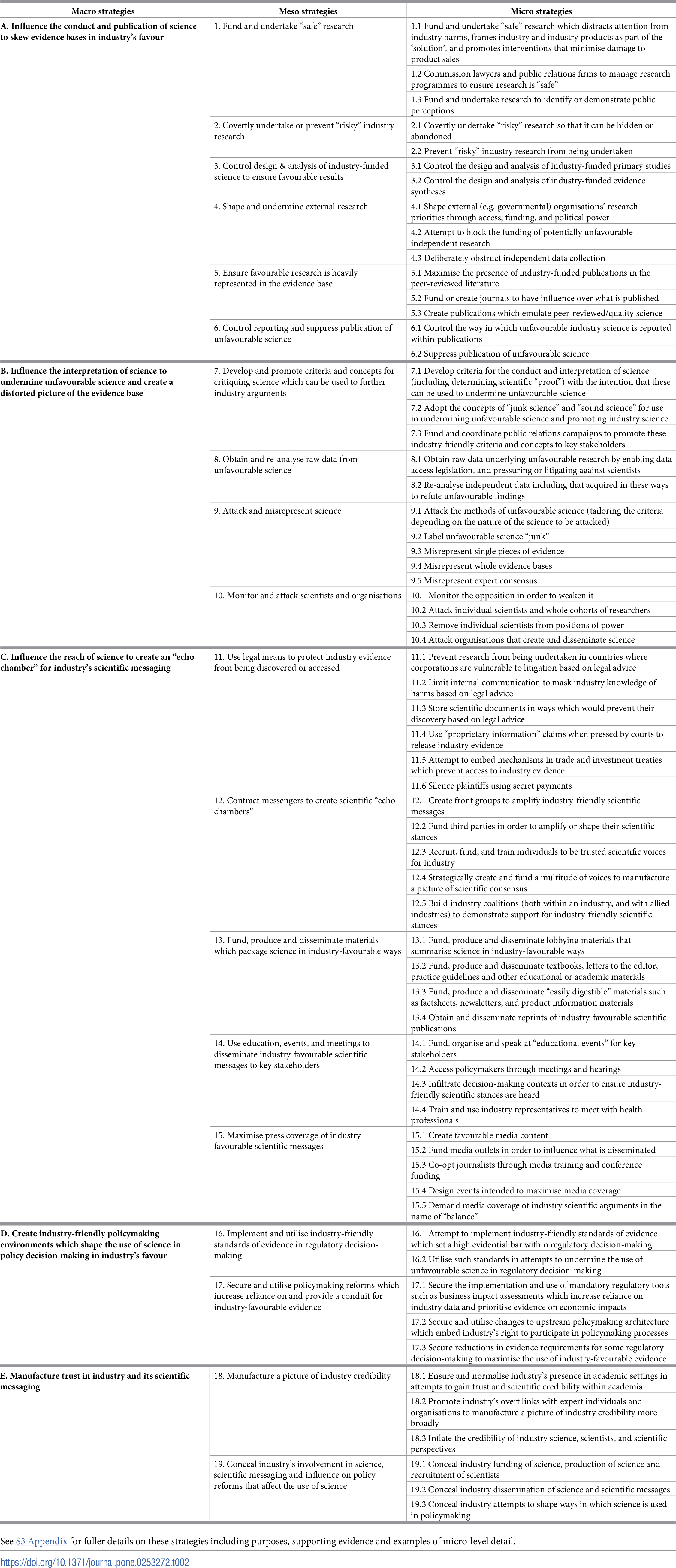The Science for Profit Model—How and Why Corporations Influence Science and the Use of Science in Policy and Practice
Abstract
Introduction
Science has been at the centre of attempts by major industries, including tobacco, chemical, and pharmaceutical, to delay progress in tackling threats to human and planetary health by, inter alia, obscuring industry harms, and opposing regulation. Some aspects of this influence are well documented, others remain poorly understood, and similarities between industries remain underexplored. This study, therefore, aims to synthesize the literature to develop an evidence-based typology and model of corporate influence on science in order to provide an overview of this multi-faceted phenomenon.
Method
The researchers obtained literature examining corporate attempts to influence science and the use of science in policy and practice from: database searches, bibliographies, expert recommendations, and web alerts; using a modified scoping review methodology (n = 68).
Results
Through interpretive analysis the researchers developed the Science for Profit Typology and Model. The study identified eight corporate sectors repeatedly engaging in activities to influence science, including:
- manipulation of scientific methods;
- reshaping of criteria for establishing scientific “proof”;
- threats against scientists; and
- clandestine promotion of policy reforms that increase reliance on industry evidence.
The typology identifies five macro-level strategies used consistently across the eight industries, comprising 19 meso-level strategies. The model shows how these strategies work to maximise the volume, credibility, reach, and use of industry-favourable science, while minimising these same aspects of industry-unfavourable science. This creates doubt about harms of industry products/practices or efficacy of policies affecting industry; promotes industry-favoured policy responses and industry products as solutions; and legitimises industry’s role as scientific stakeholder. These efforts ultimately serve to weaken policy, prevent litigation, and maximize use of industry products/practices—maximizing corporate profitability.
Conclusion
This study provides an accessible way to understand how and why corporations influence science, demonstrate the need for collective solutions, and discuss changes needed to ensure science works in the public interest.

